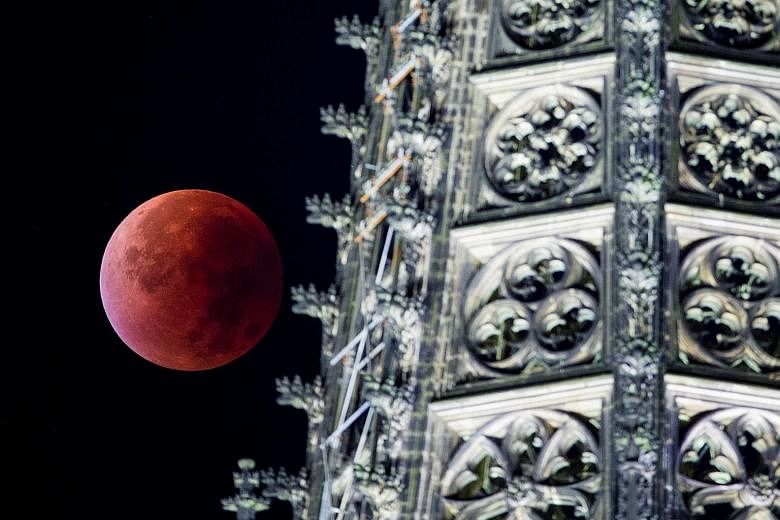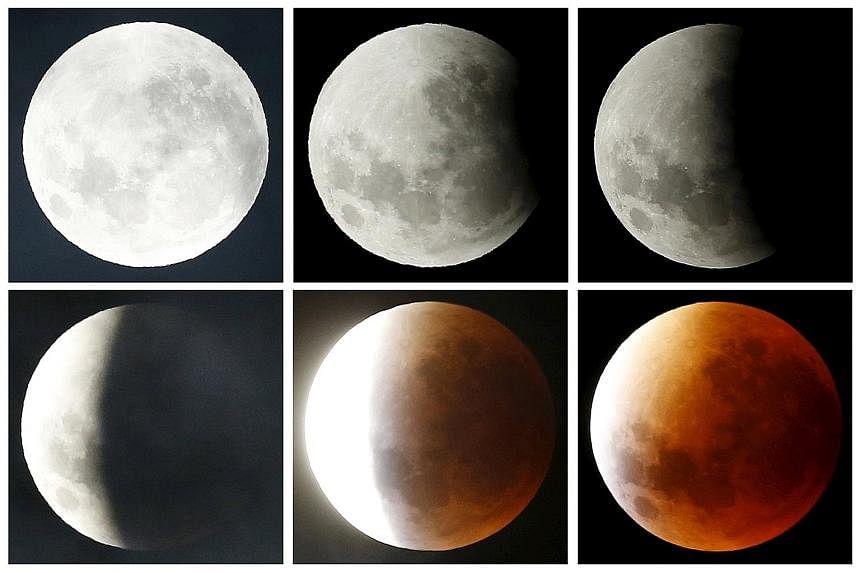WASHINGTON • Skygazers were treated to a rare astronomical event when a swollen "supermoon" and lunar eclipse combined for the first time in decades, showing Earth's satellite bathed in blood-red light.
The celestial show, visible from the Americas, Europe, Africa, west Asia and the east Pacific, was the result of the Sun, Earth and a larger-than-life, extra-bright Moon lining up yesterday for just over an hour, from 2.11am GMT (10.11am Singapore time).
In downtown New York, where it was still Sunday, crowds of people gathered on plazas and pavements, gazing up at the sky and trying to take photos of the so-called "blood moon" phenomenon, which began at 10.11pm local time.
During that moment, the Moon was at its closest orbital point to Earth, called the perigee, while also in its brightest phase.
The resulting "supermoon" appeared 30 per cent brighter and 14 per cent larger than when at apogee, the farthest point - which is about 49,900 km from perigee.
Unusually, our planet was in a position in a straight line between the Moon and the Sun, blotting out the direct sunlight that normally makes our satellite glow whitish-yellow.
But some light still crept around Earth's edges and was filtered through its atmosphere, casting an eerie red light that creates the blood moon.
The Moon appeared to be more of a copper colour than reddish tone, however.
It travels to a similar position every month, but the tilt of its orbit means it normally passes above or below the Earth's shadow - so most months have a full moon minus eclipse.
The last super-blood-moon, only the fifth recorded since 1900, was in 1982, according to the US' National Aeronautics and Space Administration.
The next will not be until 2033.
AGENCE FRANCE-PRESSE


